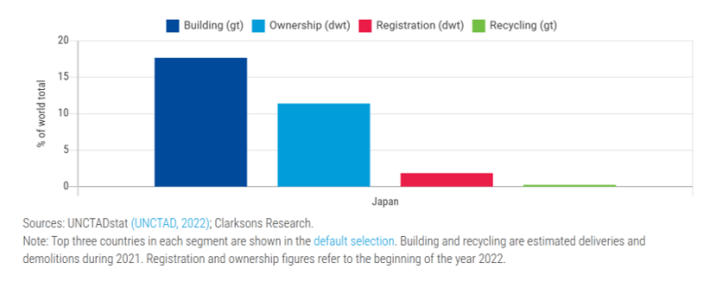

— Latest update: November 2023 —
As Japan is an island nation, it is hugely dependent on the sea. It is also one of the world’s great maritime traders thanks to its reliable and efficient shipping, advanced engineering capacity, and its top-quality maritime research. The sector remains a high-cost economy but the sophistication and high quality of Japanese shipyards have ensured their status. Japan remains as of today the third largest shipping country after China and Greece. The country comprises 102 major ports, 5 international strategic ports (of international importance), and 18 international hub ports (used to provide quick access to airports, roads, and railways).
The most enduring obstacle for Japan’s Maritime Sector is its ageing workforce. Despite heavy government promotion, fewer young Japanese are opting for a maritime career, as a result of which foreigners comprise most of the people working in Japanese fleets. To ensure service quality, they are trained in establishments controlled by the companies themselves.
Below graph from 2021 shows that Japan is mostly specialized in building ships, amounting to 17,6% of the world’s total. Recycling of ships in Japan only amounts to 0,007% of the world’s total.

Ministry of Land, Infrastructure, Transport and Tourism, Port-Related Statistics, 2023
United Nations Conference on Trade and Development, Handbook of Statistics 2022: Merchant Fleet, 2023
United Nations Conference on Trade and Development, Review of Maritime Transport, 2023
> Click here for more information about EPA & Maritime Transport
Table of Contents
The EU-Japan Centre currently produces 5 newsletters :









